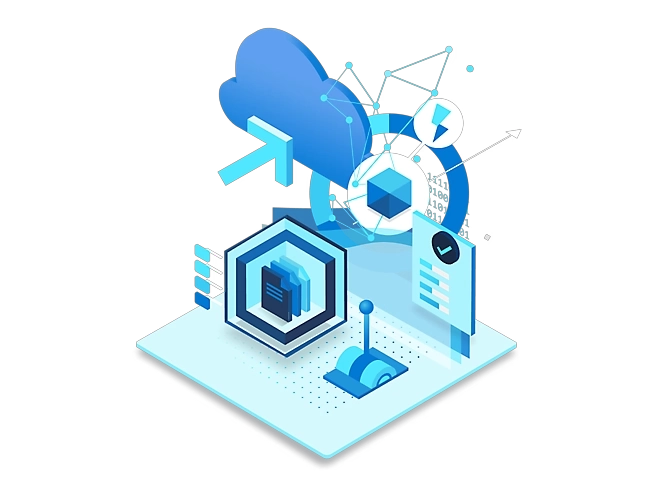Bridging AI and IoT: A New Era of Smart Devices
The integration of Azure OpenAI with IoT represents a paradigm shift in how intelligent systems interact with the physical world. Edge devices equipped with AI models can analyze data locally, reducing latency, optimizing bandwidth, and enabling real-time decision-making. This shift empowers enterprises to develop self-learning systems that adapt to dynamic environments and improve automation capabilities without relying on constant cloud connectivity.
Key Capabilities of Azure OpenAI in IoT
- Real-Time Edge Intelligence: AI-powered edge devices process data locally, ensuring rapid insights and minimizing reliance on cloud servers.
- Predictive Maintenance: Azure OpenAI enables IoT devices to forecast potential failures and schedule preventive maintenance, reducing downtime.
- Natural Language Interaction: Smart devices gain conversational abilities, allowing users to control them using voice commands and text-based queries.
- Enhanced Security: AI-driven anomaly detection enhances cybersecurity for IoT ecosystems by identifying suspicious behaviors in real-time.
- Autonomous Decision-Making: Generative AI enables IoT devices to process complex scenarios and take actions independently based on learned behavior.
Industry Transformations Through AI and IoT
The impact of Azure OpenAI on IoT is evident across various industries. In manufacturing, AI-powered IoT systems analyze machine sensor data to detect anomalies, optimizing production efficiency. The healthcare sector benefits from smart medical devices that continuously monitor patient vitals and provide predictive diagnostics. In retail, AI-driven IoT enhances personalized shopping experiences by analyzing in-store customer behavior and automating inventory management.
Optimizing AI Workflows on Edge Devices
Deploying Azure OpenAI models on edge devices requires careful optimization to ensure performance efficiency. AI models must be compressed using quantization techniques, and inference workloads must be distributed between cloud and edge computing to achieve a balance between accuracy and speed. By leveraging Azure IoT Edge, businesses can seamlessly manage AI deployments on thousands of smart devices while maintaining centralized control over security policies and model updates.
Security and Compliance in AI-Driven IoT
Security is paramount when integrating AI with IoT devices, as connected systems are vulnerable to cyber threats. Azure provides robust security solutions, including zero-trust architecture, AI-driven threat detection, and encrypted communications between devices and cloud platforms. Compliance frameworks such as GDPR and HIPAA are embedded into Azure AI services, ensuring that businesses can deploy AI-powered IoT solutions without compromising data privacy and regulatory standards.
Case Study: AI-Powered Smart Cities
A leading metropolitan city implemented Azure OpenAI and IoT to develop an intelligent traffic management system. AI models processed real-time video feeds from smart cameras, dynamically adjusting traffic signals based on congestion patterns. The deployment resulted in a 30% reduction in traffic delays and improved emergency response times. Additionally, AI-powered environmental sensors monitored air quality, alerting citizens and local authorities about pollution levels.
Best Practices for AI and IoT Integration
-Leverage Hybrid AI: Distribute AI processing between cloud and edge devices for optimal performance.
-Ensure Low-Latency Connectivity: Use Azure IoT Hub to streamline real-time communication between AI models and IoT sensors.
-Implement Secure Authentication: Enforce strict access controls with Azure Active Directory (AAD) for IoT endpoints.
-Monitor AI Performance: Utilize Azure Monitor and Log Analytics to track AI model accuracy and system efficiency.
-Automate Model Updates: Use Azure DevOps and IoT Edge for seamless deployment and continuous learning cycles.
The Future of AI and IoT Convergence
The fusion of AI and IoT is set to redefine automation and digital transformation. Future advancements will see AI models becoming more efficient at edge inference, reducing their dependency on cloud resources. Innovations in federated learning will allow AI models to learn collaboratively from multiple edge devices while maintaining privacy. As AI and IoT become more intertwined, industries will shift toward self-optimizing ecosystems where machines anticipate needs, make informed decisions, and continuously improve operations without human intervention.
Conclusion
Azure OpenAI and IoT are driving the next wave of digital transformation, enabling businesses to build smarter, more autonomous systems. By leveraging AI for edge intelligence, enterprises can enhance efficiency, reduce operational costs, and unlock new opportunities for innovation. With continuous advancements in AI and IoT security, businesses can confidently deploy intelligent, scalable solutions that will shape the future of connected technology.

